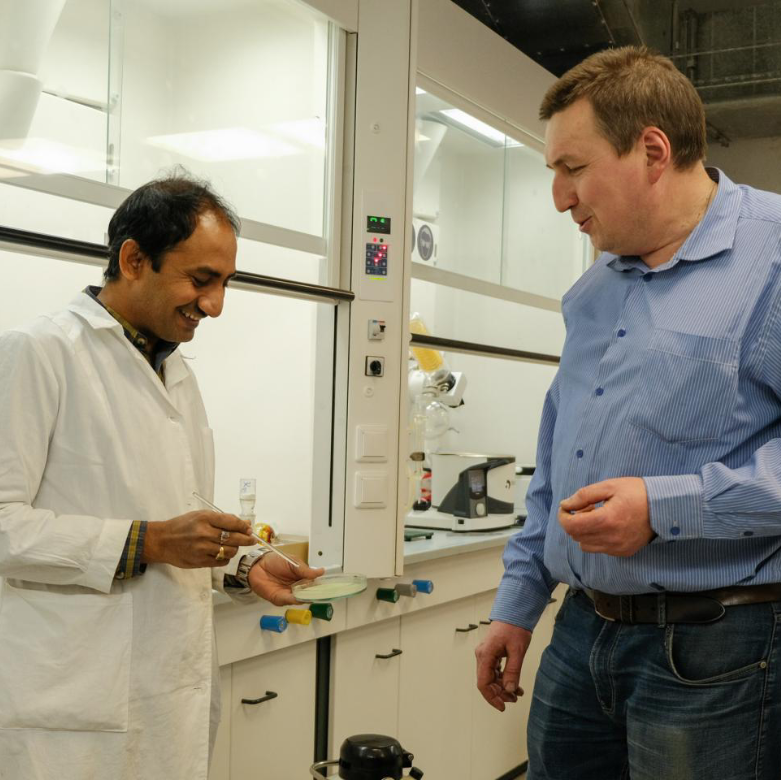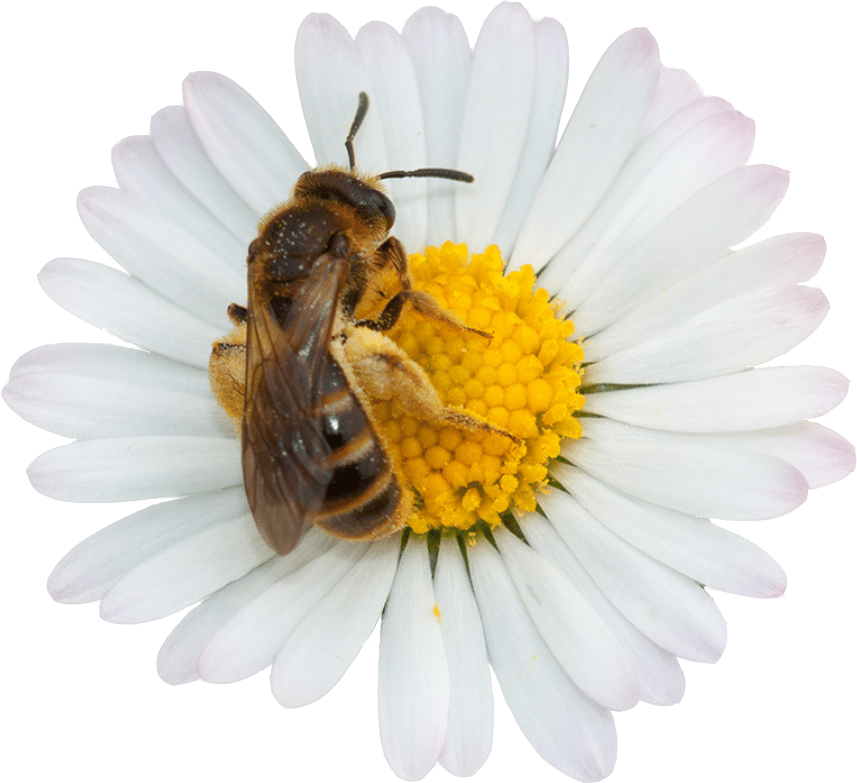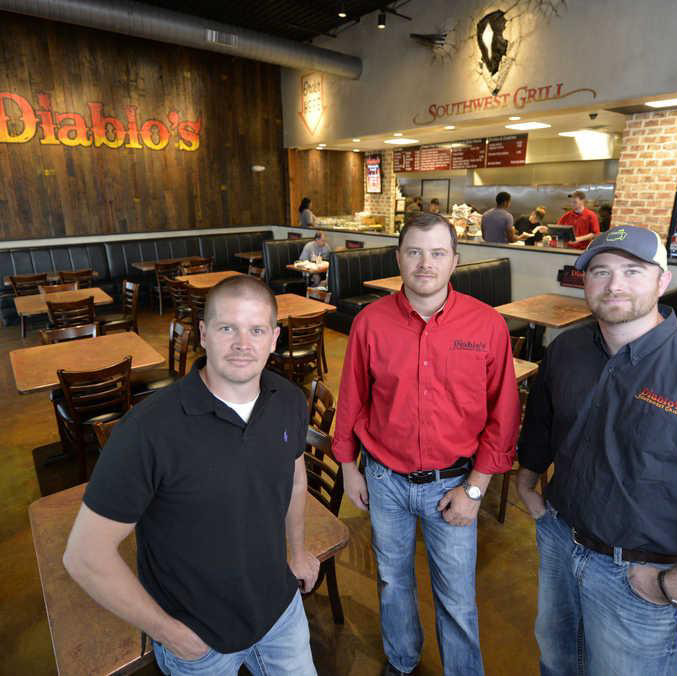Author: Kelly Brant
- Meet the St. Louis Zoo’s most trusted assistents
- When the St. Louis Zoo needed a hand, they knew who to call: “The Turtle-Whisperer”. This is the cryptic moniker for John Rucker, the man who has trained seven Boykin spaniel dogs to sniff out turtles. The zoo summoned Rucker and his canine team to their WildCare Park conservation area to track down three-toed box turtles, who are currently being threatened by an outbreak of Ranavirus—a disease which has an 80% fatality rate for this specific group of reptiles. Once a turtle is found, the dog brings it to a scientist who applies a tracking advice to the reptile, which will remain on their shell for a year as part of a continued research initiative. Ultimately, tracking has been implemented to better understand the turtles’ movement through their environment and their health amidst the spread of the dangerous Ranavirus. Rucker’s dogs are trained to be “soft-mouthed”, gently picking up the turtles and bringing them to officials at WildCare Park. Thankfully, the virus cannot be spread to dogs, so their direct contact with the turtles does not put their health in jeopardy. In a Good New Network Article, St. Louis Institute for Conservation Medicine’s Jamie Palmer expresses gratitude for the dog’s turtle-finding prowess. “Every year we do annual health assessments of our turtles at our field sites. We spread out in a line and just walk the woods, eyes to the ground—and we don’t do it well because they’re good at hiding,” he says. “There’s so much error in humans, and we’ve spent hundreds of hours. But dogs, their noses are better than ours…and we’ve seen them find a lot of turtles.” Because the turtles leave behind a very faint scent of smell in the ground as they move, the dogs’ acute olfactory skills and proximity to the ground make them a prime candidate for being effective “turtle-whisperers.” So, with the dogs’ help, scientists are able to find their turtles safely in a much more efficient manner—which is especially necessary as these turtles encounter a severe health scare. Rucker’s turtles have also brought their talents to neighboring Iowa and Illinois. As Missouri’s official reptile, the three-toed box turtles are of particular interest to the state, making the threat of the Ranavirus pathogen all the more significant.
- Stranger surprises 4-year-old twins with puppy after finding wishlist tied to balloon over 500 miles away
- As a way to brighten the darker days of the pandemic, Leticia Flores-Gonzalez allowed her four-year-old twin daughters, Luna and Gianella, to make more arts and crafts. The twins released a set of red balloons from their yard in Liberal, Kansas back in December as their way of sending Christmas wish lists to Santa. The balloons made it all the way to Alvin Bamburg of Shreveport, Louisiana as he was hunting. This discovery led to the twins receiving everything on their Christimas list. The twins’ mother, 37, said she is still stunned by strangers’ generosity. The idea for the wish list balloons came from family relatives in Mexico. “I took a picture of their letter because I never thought we’d see it again,” said Flores-Gonzalez. “It was super windy and cold. I didn’t expect it to go any further than Liberal. Two days before Christmas, Bamburg was deer hunting in Grand Cane, Louisiana when he spotted the red balloon. He found a note attached to the balloon that said a little girl from Kansas had been a good girl all year and wanted a Disney “Frozen” doll and a puppy. Bamburg shared his findings to Facebook in a post that garnered over 220 shares. He located the little girl within 24 hours. Flores-Gonzalez was unsure about how to respond. “I felt bad. I didn’t want gifts. I didn’t do it for that purpose,” she said. “My sister and family told me it’s a once-in-a-lifetime thing. Finally, after we spoke for a while, they convinced me to go ahead and get ahold of Alvin.” Bamburg shipped several boxes of gifts to the family, and said he just had to get the puppy. Flores-Gonzalez and Bamburg met in Oklahoma City to surprise the girls with their new furry friend, Max. The new family friends communicate almost daily and have plans to meet up again in May. “There’s so much depression, so much sadness going on. Some people are losing their families because of this pandemic,” Flores-Gonzalez said. “This gives us hope there’s so many wonderful people still on this Earth.”
- Amazon (and others) Help Save the Amazon
- A new private-public endeavour is underway to save the rainforest. Norway, Britain, and the United States’ governments are partnering with major private companies to finance the protection of the world’s tropical forests. Such big-name companies include such as Amazon, Nestle, Unilever, Airbnb, Boston Consulting Group, McKinsey, and Bayer. At the US-convened Leaders Summit on climate, the extensive group announced their “Lowering Emissions by Accelerating Forest” (LEAF) finance coalition. They intend to raise $1 billion in initial financing. Their plan is simple: governments and companies participating in the LEAF coalition will pay countries with tropical and subtropical forest for emissions reductions. These countries will have to cut their emissions under the supervision of a third-party environmental agency. The immediate goal is to reduce deforestation, and the ultimate goal is to end it completely. This initiative is increasingly important, as the pace of deforestation is picking up. 2020 saw a 12% increase in deforestation compared to last year, losing approximately 10 million hectares of tropical rainforest- about the size of Switzerland. According to US Special Presidential Envoy for Climate John Kerry, “The LEAF coalition is a groundbreaking example of the scale and type of collaboration that is needed to fight the climate crisis and achieve net-zero emissions globally by 2050. Bringing together the government and private-sector resources is a necessary step in supporting the large-scale efforts that must be mobilized to halt deforestation and begin to restore tropical and subtropical forests.” This pioneering model is extremely innovative in its local-level involvement. Manish Bapna, the Interim President and CEO of World Resources Institute, stated, “with local-level involvement, this approach can be a triple-win: for the climate, tropical forests and for people that depend on them.” This previously unmatched level of finance could result in unmatched progress towards addressing the climate crisis we are facing.
- Dedication to Diversabilities
- In a year where several movies featuring people with disabilities were nominated for Oscars, it is only right that a ramp leading up to the stage would be included. It is shocking that there has not been an alternative to stairs present at award ceremonies in the past. The ableist standard is seen in many instances in the arts. For example, when Ali Stroker won the Tony Award for best featured actress in a musical for her role in the “Oklahoma!” revival in 2019, she had to wait backstage because there was no ramp for her to access the stage in her wheelchair. Since then, there have been strides in making spaces more accessible for those with disabilities, as well as pushes to include more representation in film. 25% of the population in the United States has a disability, but representation on screen makes up only about 1%. Eryn Brown, a talent manager at Management 360, and other advocates are trying to rectify this issue. Brown founded the 1in4 campaign, an intersectional advocacy organization led by disabled creatives currently working in Hollywood. Their goal is to increase employment and authentic representation of disabled people. In addition to Brown, James Labrecht, the co-director of the Oscar-nominated film “Crip Camp,” is challenging the ableist norm. The movie is about a kid’s summer camp where multiple campers go on to become activists. His movie focuses on disability rights and, as an advocate, he constantly emphasizes the amount of work that still needs to be done for people with disabilities in show business. LeBrecht told MSNBC, “It’s just been deeply frustrating but more, like, sobering...It makes me aware of how much further we have left to go.”
The Twitter account for “Crip Camp” actually pointed out that the ceremony included a ramp near the stage. The tweet stated, “While our film didn’t win Best Documentary Feature, we are proud of the momentum that Crip Camp has created for a push towards disability inclusion...From tonight’s historic accessible stage to the broadcast’s innovative captioning, it’s clear disability inclusion is here to stay.” In addition to “Crip Camp,” two other nominated films also were about disabilities. The “Sound of Metal'' is about a deaf drummer and “Feeling Through” is about a friendship between a teen and a deaf and blind man. Hopefully, the diversity present at the Oscars, in plots, nominations, and attendance, is a trend that continues to grow upwards.For the first time ever, this year’s #Oscars stage has a ramp! We are so delighted to see disability inclusion tonight. https://t.co/22LoM7vdMP
— Crip Camp Film (@CripCampFilm) April 26, 2021
- Have your wrapper and eat it too: scientists develop edible food wrappers
- We all generally know the components of a nutritious meal: vegetables, fruits, whole grains, protein and...edible food wrap?! Scientists from India and Russia have found a solution to the both (currently) inedible and wasteful plastic product which is used to preserve various types of food. Their new invention is biodegradable and safe for human consumption. The shocking development is a positive sign that grocery shopping and commercialized food has potential to be reformed in a way that is safer and more sustainable for both the environment and human bodies. The concoction is a composite of alginate molecules and ferulic acid (a cinnamic acid derivative). Specifically, the sodium alginate used to create the edible film is found in brown algae, and “performs as liquid gel”, helping the compound fuse together, claims senior researcher Rammohan Aluru. According to scientists involved in the research, the production of the edible film does not require any Star Trek-esque, futuristic equipment. Grigory Zyryanov, professor of organic and biomolecular chemistry at Ural Federal University, says that the edible food wrap can be made at a polymer production facility and “if an inexhaustible source of algae in the ocean is nearby it will be quite simple to create such films.” Now, there are many things that humans can technically eat, but have no real health properties—think fruit roll-ups, Cheetos, or almost any item your child begs you to buy them when you are going through the check-out line. Surprisingly, this edible food wrap has healthful components—scientists claim that ferulic acid has a wide variety of antioxidant and pharmacological properties. And, it appears that manufacturers could add antiviral agents that make the food within the wrappers safer. Zyryanov claims that “we can add to the films natural antiviral agents, which will also extend the shelf life of food. Garlic, turmeric, and ginger contain compounds that may prevent the spread of the viruses.” In time, one may truly be eating their way through their groceries. The official study as published in the Journal of Food Engineering can be found here.
- Trevor Lawrence donates $20,000 to Jacksonville charities as a response to wedding gifts
- When you are the presumptive No. 1 pick in this year’s NFL draft, it is hard to keep the fame from getting to your head. Yet, for Trevor Lawrence of Clemson University, he has had no trouble starting off on the right foot in his predicted new home of Jacksonville, Florida, donating $20,000 to the Jacksonville community for their kindness and gifts after his recent wedding. Trevor Lawrence, the former star quarterback at Clemson University, is pretty certain he will be starting his career off in Jacksonville, as the Jaguars have the first pick in the 2021 NFL draft, and the fans couldn’t be happier. The 21-year-old married long-time girlfriend Marissa in early April of this year, and the newly-weds were immediately showered with wedding gifts and donations to charities of their choosing by Jaguar fans. The couple expressed their gratitude in a tweet, and announced their generous donation of $20,000 to charities in Jacksonville. Lawrence has been talked about since he was a star in high-school, and in his three years with Clemson, scored 108 total touchdowns, winning 97% of his games as a starter. But, his prowess as a player is not the only thing that keeps Lawrence in the headlines.
 Lawrence has continually used his platform as an elite college athlete to fight racial injustice and promote social change. In the fall of 2020, along with other college football stars from across the country, created a five-point plan to create real change, and posted it to Twitter, along with this statement:
"Over the course of the past year, our country has witnessed some of the most atrocious racial injustices against countless Black and African-American people. Too many have fallen victim to racial injustice and system inequities. Enough is enough. Real change must come."
He has been a spokesman for his team and athletes across the country in regards to social change, and has remained humble despite the fame that comes with his platform.
"So grateful and thankful for my wife and all the people in our life," Lawrence captioned the Instagram post of his wedding.
Lawrence has continually used his platform as an elite college athlete to fight racial injustice and promote social change. In the fall of 2020, along with other college football stars from across the country, created a five-point plan to create real change, and posted it to Twitter, along with this statement:
"Over the course of the past year, our country has witnessed some of the most atrocious racial injustices against countless Black and African-American people. Too many have fallen victim to racial injustice and system inequities. Enough is enough. Real change must come."
He has been a spokesman for his team and athletes across the country in regards to social change, and has remained humble despite the fame that comes with his platform.
"So grateful and thankful for my wife and all the people in our life," Lawrence captioned the Instagram post of his wedding.
- California woman has fostered 81 infants over the past 34 years
- 78-year-old Linda Owens of Hayward, California was recently honored after taking in her 81st infant as a foster parent. “This is what God’s handed me a gift to do,” said Owens, a retired grocery department manager. Owens took in her first baby 34 years ago, and cares for each child on her own. Sometimes she even watches two at a time. Owens cares for the children until they are adopted or can return to their birth family. When she has to part ways with the babies, she often struggles to say goodbye. "I can give her a kiss on the forehead and wish her the best, and say, 'I love you,'" Owens said of the baby she is currently fostering. She has had this 7-week-old baby girl since she left the hospital as a newborn. She gets paid for her foster care, but she also buys certain supplies like baby gear and clothing with her own money. Many babies have come to Owens exposed to drugs in the womb, while others have developmental delays. Many of the babies do not sleep through the night. About 140,000 children are adopted in the United States each year. About 59 percent of those adoptions come from the foster care system, according to Adoption Network. Owens says she still remembers all the babies that she has cared for, despite all the years that have passed. The oldest child she cared for is now 37. She has also cared for three sets of twins. “It’s a challenging job,” she said, “but very rewarding.”
- Proceeds from world’s largest painting to be donated to organizations supporting children
- The impact of the world’s largest painting is going to far surpass its 17,000 square feet. In March, artist Sacha Jafri sold his massive magnum opus, The Journey of Humanity, to businessman Andre Abdoune for $62 million at a Dubai charity auction. All proceeds from the sale will be donated to programs supporting child health and education. Children were central to the creation of Jafri’s enormous work. The British painter asked children from around the world to send him artwork reflecting their personal experience of the COVID-19 pandemic. Then, Jafri pasted their work in various places across his sprawling canvas—which about the size of four NBA basketball courts. Guinness World Records named the masterpiece the world’s largest canvas painting. Stuck in Dubai because of the pandemic, Jafri was inspired to use his isolation as a means to create his most expansive work yet. Last year, at the start of the project, Jafri told CNN that he “wanted to create something poignant, something that would mean something. Something that could potentially make a really big difference.” So, Jafri filled up the entire ballroom of Dubai’s Atlantis Palm hotel with canvas and quite literally got on his hands and knees to create The Journey of Humanity. According to a CBC article, Jafri spent 20 hours per day painting during the eight month project. The operation included 1,065 paint brushes and over 1,600 gallons of paint, along with one emergency back procedure. Jafri’s back, pelvis, and heels all suffered injuries during his relentless creative process, which involved strenuous, active body movement. He tells CBC: "I did a lot of damage to my body. I paint from a very sort of deep, meditative state. So I'm in a trance. I don't realize the damage I'm doing [to my body].” Jafri had cut his painting into 70 different panels, with the goal of selling them individually. He anticipated that, in total, he would fetch $30 million at auction to ultimately distribute to various youth-focused charities and organizations. So, Abdoune’s offer to buy all of the panels for $62 million came as a shock—and made Jafri’s vision all the more real. Quoted in CNN, Jafri says: “I had a vision to reconnect our broken planet through the hearts, minds and souls of the children of the world. I feel in my heart that we have come one step closer to achieving [this goal]...thanks to Andre."
- The Buzz Around Walmart
- Walmart has just announced that it will be making efforts to reduce pollinator extinction by adopting integrated pest management (IPM) strategies and building pollinator habitats. This is all part of Walmart’s 2020 pledge to become a regenerative company. In terms of IPM, by 2025, Walmart promises that all of its fresh flowers and produce will be sourced from suppliers that are third-party integrated pest management- approved. Senior Vice President Martin Mundo stated, “We will also continue to avoid selling invasive plant species in our retail sources...and we will work with local organizations to protect, restore or establish pollinator habitats in major pollinator migration corridors.” Walmart also plans to include a pollinator garden in its new headquarters. A pollinator garden is planted and designed with specific nectar and pollen producing plants in order to attract pollinating insects. At this new 350-acre campus in Bentonville, Arkansas, set to be fully completed in 2025, three-quarters of the plant species will be pollen-producing plants in order to attract bees and other pollinating insects. Mundo stated, “Meadows planted near lakes will provide ample undisturbed pollinator foraging habitats as well as important water access and potential for more intentional nesting habitat spaces for insects, small animals and birds.” As of today, over twenty Walmart stores already have their own pollinator gardens. More gardens are in the works. Further, Walmart has partnered with solar companies to establish pollinator habitats near solar panel clusters, such as its distribution centers in South Carolina and Minnesota. Also, the retail giant is asking its suppliers to label pollinator-friendly plants in order to educate and encourage customers to purchase environmentally friendly species. It is Walmart’s hope that its consumers will produce their own pollinator gardens. According to Mundo, “In total, more than 1.3 million annual and perennial pollinator-promoting plants will carry tags in Walmart stores this spring.” The desire to save the bees, birds, and butterflies is just one of Walmart’s many initiatives to protect and restore the environment. Earth Day may only be once a year but Walmart is now paying tribute to mother nature everyday.
- Restaurant owner offers job to burglar instead of pressing charges
- Carl Wallace, the owner of Diablo’s Southwest Grill in Augusta, Georgia, was shocked when he showed up to his restaurant one morning to a shattered front door. He quickly checked his surveillance cameras, and saw the scene that had unfolded earlier that morning. At 4 AM, the burglar smashed the front door and ran up to the cash register, only to find it empty, after which he promptly left. Instead of calling the police, as most would after such a crime, Wallace decided to take to Facebook, offering the suspect a job and a chance at a better life. On the post Wallace wrote: “To the would-be robber who is clearly struggling with life decisions or having money issues... please swing by for a job application. There are better opportunities out there than this path you’ve chosen…. Let’s sit down and talk about how we could help you and fix the road you’re on.” Wallace soon went viral for his act of kindness, and hundreds are flocking to his restaurant because of it. “They’re risking so much every time they do this: to the business owner, to themselves, or what could happen if the police show up during the process of the break in,” Wallace said sympathizing with the suspect. Wallace said that he thinks the robber was the culprit of two other recent local robberies, as the victims of an attempted robbery said their surveillance footage matched his. Wallace and Diablo’s are being praised in the Facebook comments, and Wallace hopes that others will follow in his lead. "I can't save the world but maybe I can make a change in one person's life," he said. "If they're willing to do better then I'm willing to be there for them... The police catch him and he's back on the street a few days later and that person's life didn't get corrected."









